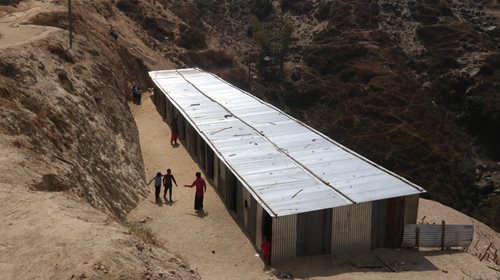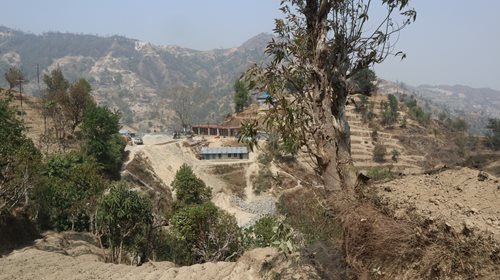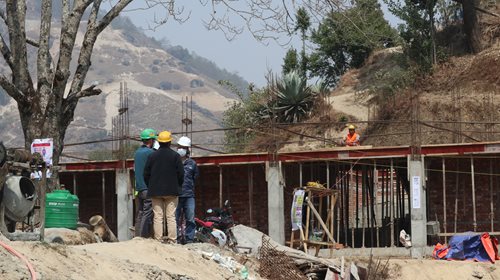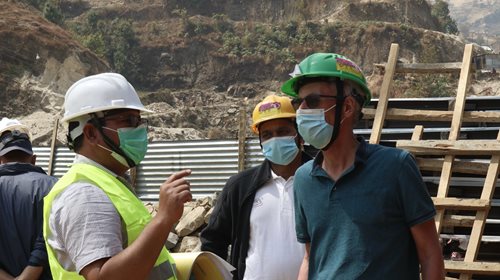In March I had the chance to visit more of the post-earthquake work the
Purnima Programme has been supporting and managing, realising worthwhile efforts funded by UK Aid. We set out from the district headquarters of Dhading Besi to discover that although we only needed to travel 25km as the crow flies, the drive took three hours. We were close to Kathmandu, perhaps a five-hour drive – but this felt a remote and neglected community. Road access to our target destination was via winding, tracks that looked carved out of brick-red silt with a weird consistency that makes it flow and gives no purchase for car tyres, indeed at one point, we came to another small landslide which our trusty driver, edged a bit to tentatively across and for one heart-in-mouth moment it looked like a back wheel would slip over the edge. We resolved to use a shovel for some impromptu road-building on the return journey.
Thumki Danda, our destination, was high up on one of the east-west ridges, Himalayan foothills that overlook Nepal’s lowlands, its rice-basket. Sadly forest fires and stubble-burning obscured any views despite the prevailing brisk, desiccating breezes but the air felt fresh and invigorating up there. This was a poor area inhabited by the Chepang – marginalised indigenous people, and although the landscape was arguably made more scenic by innumerable terraces, these were built from necessity over generations because there was no flat land and every scrap was needed for growing food.
The school had been badly damaged during the earthquakes and was judged unsafe. The steep and challenging terrain meant that what remained of the school building had to be demolished before rebuilding could begin. Lessons still needed to continue though so in less than a month, a Temporary Learning Centre was constructed – from corrugated iron. The only toilets were two small cubicles – one for females, and one for males; staff and around 258 pupils have to share.
Even once the original site was cleared though, the engineers were faced with numerous challenges because there was so little space, and bringing cement and reinforcing rods and stone and even recruiting labour was at times impossible. Slowly though the school is emerging out of the dust and at least one of the main buildings should have a roof by the time the Rains arrive this year.
I've posted several other pieces over the last month about Purnima's work and here is a link to other stories from the worst earthquake-effected districts
Leaving No-one Behind
 |
| The Temporary Learning Centre (TLC) at Thumki Danda, Dhading District |
 |
| Rebuilding the school at Thumki Danda; note the dry fields ready for planting |
 |
| There is still plenty of work to do before the roofs go on. The monsoon starts in June |
 |
| Three engineers discussing the progress and challenges of rebuilding the school |